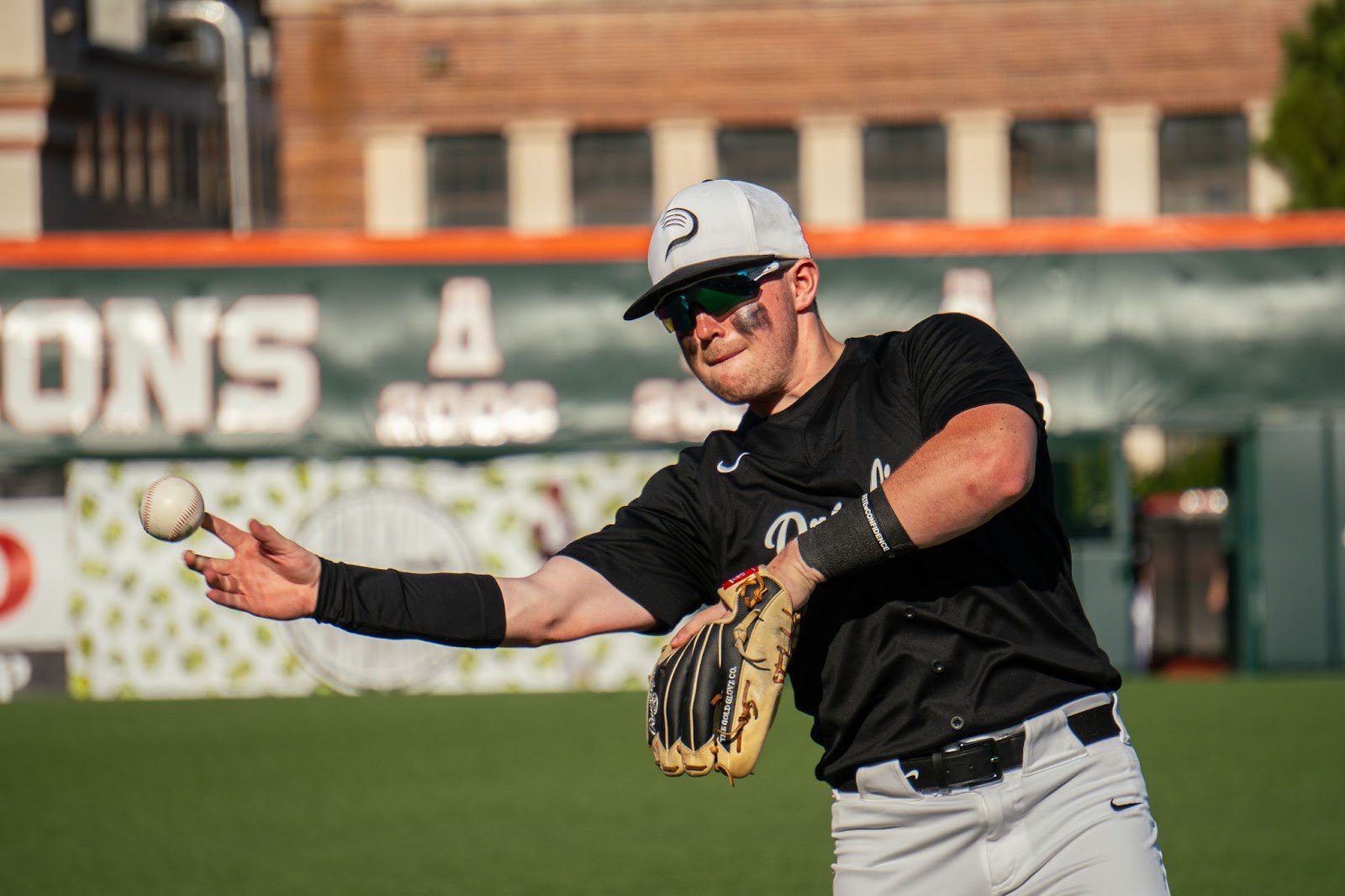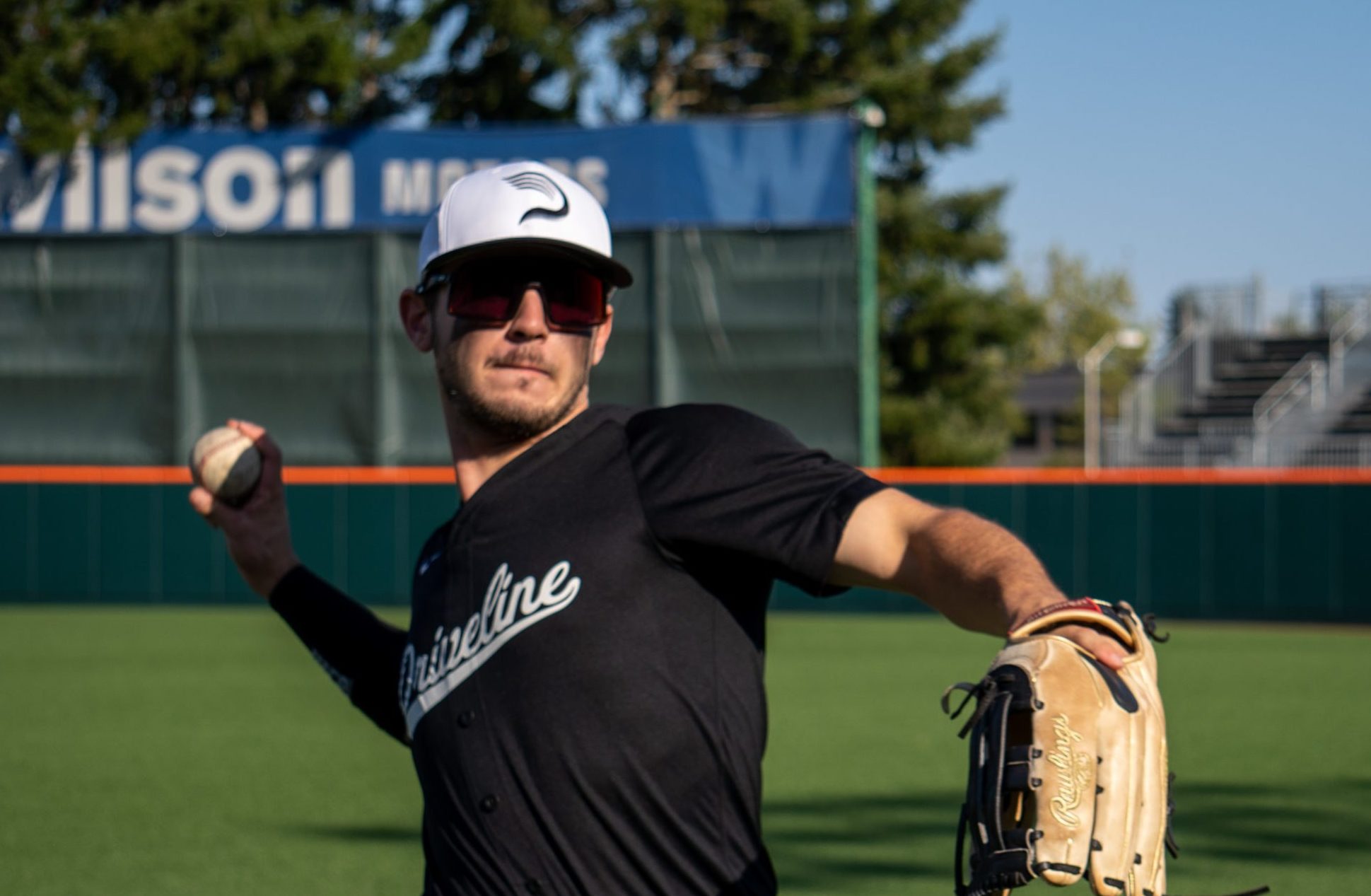Arm Care for Position Players

Written by JP Fasone – Hitting Trainer
In my experience, position players rarely go the whole season without arm pain. It’s no surprise that arm care gets moved to the back burner, behind offensive and defensive work, but arm care doesn’t need to be complicated or time-consuming.
If you understand how to ease into high intent and high volume throwing, while also managing recovery time throughout the year, you can mitigate injury risk and arm pain.
On-Ramping
On-ramping aims to slowly expose the body to increasing amounts of stress, also referred to as workload, over an extended period of time. The body’s soft tissue, muscles, tendons, ligaments, etc., will lengthen to adapt to long-term stress. For example, if you stretched your hamstring every morning for 6-weeks, your hamstring’s resting state would have lengthened, making it easier to stretch (i.e., handle the workload). This allows the body to protect itself against injury, but it also works the opposite way.
Without exposure to stress, the soft tissue’s resting state contracts. Imagine never stretching your hamstring, then going out and doing max effort sprints. You would probably expect to pop your hamstring because the contracted muscle is unprepared to accept the force that sprinting puts on it. Jumping back into a full schedule of high intent, high volume throwing after a summer of (for most athletes) minimal to inconsistent throwing causes a spike in workload and increases the risk of injury.
We need to slowly work up to an in-season throwing workload by on-ramping athletes from lower volume and intensities to higher volume and in-game intensities, gradually allowing the soft tissue to adapt. As a general rule, on-ramping should last as long as the player’s time off from throwing, with a maximum of 6-weeks.
Coaches and athletes can do this by monitoring the intent and number of throws athletes make week to week. By dividing the days into hybrid A days (80-90% intent), hybrid B days (60-70% intent), and recovery days (<60% intent), we can schedule a basic on-ramping program.

You can change this schedule based on your practice schedule and the athlete’s relative arm fitness, but the principle remains true. By slowly building more high intent, high volume days into the program, we allow the body to adapt to the increased stress over time, decreasing the risk of injury.
Maintaining Arm Health
Once the athlete has completed their on-ramping phase, we can shift our attention to maintaining the athlete’s workload. Thinking back to our hamstring example, we want to continue to keep our workload high enough to maintain our positive adaptations, without adding so much workload that the body can’t recover. We can do this by using two guide rails: chronic and acute workload.
Our goal is to keep the athlete’s chronic workload (average workload over 28 days) as close to their acute workload (average workload over the last 9 days) as possible. So, how do we do that? We can think about acute workload like a weekly allowance.
On day 1, the athlete has a dollar to spend for the week. The athlete should spend as close to a dollar as they can every week. So, if an athlete spends more than a dollar on a recovery day (by making a ton of throws), on the next day they should lower the volume and/or intensity to make up for the workload used on the recovery day. Workload management is like a diet; it’s not about being perfect—it’s about building good habits.
Communication is Key
The most crucial part of arm care is communicating with the athlete. No throwing program is perfect because no two athletes are the same.
If they have some soreness, maybe add more low intent days or cut down on the volume. If they feel like they have more in the tank, we can add more moderate/high intent days or increase the volume. Remember, we want to look at long-term averages. If athlete A mentions some arm pain and nothing stands out as a significant issue, coaches should check in with that athlete over the next week to see if the problem persists.
If adjustments are needed, the coach should monitor the athlete to see if the changes helped resolve the issue. This sounds simple, but it hinges on actively communicating with athletes about their arm health. Luckily, some technologies can help facilitate these conversations.

Closing Thoughts
Position players need to take care of their arms just as much as pitchers. By properly on-ramping and monitoring workload, it is simple to keep arms healthy throughout the year. Using technologies like Pulse to keep track of how athletes’ workloads are changing over the year, coaches and athletes can use ACR and the self-reported Arm Health metric to have productive conversations.
The goal of any throwing program should be to keep athletes healthy. Listen to the athlete, make minor adjustments, prioritize recovery, and you will be on your way to a healthier arm.

Position Player Bundles
Get in Touch
Need help keeping your arm healthy? In-gym and remote options are both available.
- Athlete Questionnaire: Fill out with this link
- Email: [email protected]
- Phone: 425-523-4030
Comment section